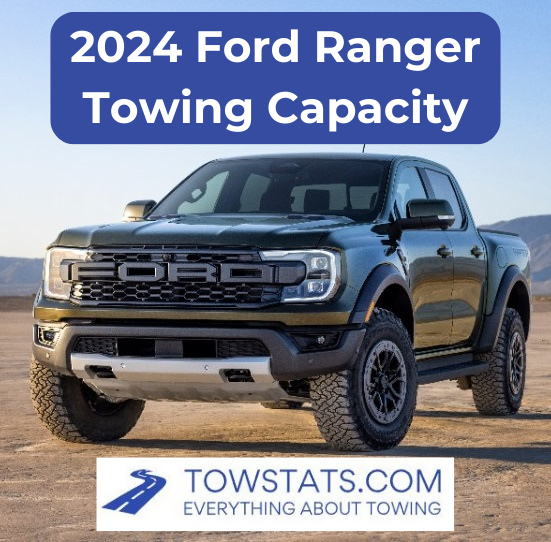The Ford Ranger has carved out a distinctive niche in the competitive mid-size truck category, celebrated for its robust performance and versatile utility. When it comes to towing capacity, the Ranger stands out as an exemplary choice for both rugged outdoor adventurers and everyday users who require a reliable towing companion. This article delves into the intricacies of the towing capacity of the Ford Ranger, exploring its capabilities, features, and considerations that owners should keep in mind.
At its core, the towing capacity of a vehicle signifies the maximum weight it can safely pull. For the Ford Ranger, understanding this metric is crucial for anyone looking to haul trailers, boats, or any heavy cargo. The Ranger’s towing capacity can vary significantly based on the specific trim level, engine option, and additional equipment installed. Thus, recognizing these factors is paramount as it affects the total capability of the truck.
The 2024 Ford Ranger, in its standard configuration, offers a commendable towing capacity, which can reach up to 7,500 pounds when equipped with the appropriate towing package, including a class IV trailer hitch. This capacity makes it competitive among its peers, empowering owners to transport substantial loads without compromising performance. Within this framework, the Ranger is particularly appealing to those who engage in outdoor activities such as camping, boating, and recreation, catering to the practical needs of its drivers.
But how exactly does the Ranger achieve this impressive towing prowess? The 2024 model is outfitted with a resilient 2.3-liter EcoBoost engine, delivering a robust 270 horsepower and 310 lb-ft of torque. This combination of power and torque is fundamental for effective towing, as it ensures the Ranger can handle steep inclines and challenging terrains with ease. The engine’s turbocharging allows for an optimal balance of efficiency and capability, ensuring that fuel consumption remains reasonable, even when towing heavy loads.
To maximize towing performance, the Ranger also includes a suite of advanced towing technologies. These features not only enhance the towing experience but also bolster safety, making it easier and more secure to maneuver with heavy trailers attached. One significant feature is the Trailer Sway Control (TSC), which utilizes the vehicle’s braking system to maintain trailer stability, effectively mitigating sway and preventing potential accidents.
Additionally, the Ford Ranger is equipped with an integrated trailer brake controller. This feature is indispensable for drivers who frequently tow heavy loads, as it allows for seamless brake modulation between the truck and trailer, resulting in improved overall control and stopping power. Moreover, the rearview camera with dynamic hitch assist enables precise positioning when hitching a trailer, a boon for novice and experienced drivers alike.
Beyond the standard towing package, prospective buyers might also want to consider optional features that elevate the towing experience. The availability of a heavy-duty payload package not merely bolsters the Ranger’s carrying capacity but also enhances the vehicle’s overall performance during towing endeavors. This package typically includes a larger radiator, upgraded rear springs, and additional cooling capabilities, further ensuring that the truck remains resilient when faced with the stresses of heavy towing.
However, potential Ranger owners should also familiarize themselves with the concept of Gross Vehicle Weight Rating (GVWR) and payload capacity. These factors play a critical role in determining how much weight the Ranger can safely carry in addition to what it can tow. The GVWR encompasses the total weight of the vehicle, including passengers, cargo, and any attached trailers. When planning a towing endeavor, it’s essential to ensure that the combined weights do not exceed the specified limits to protect both the vehicle’s integrity and the safety of those on the road.
A further nuance in the towing conversation pertains to the varied trailer types. For instance, the Ford Ranger is adept at handling various trailer configurations, from traditional campers to utility trailers and boats. Each type inherently comes with different weight guidelines and associated requirements, thus necessitating careful consideration of both the load and the towing setup. Conducting thorough research and employing an accurate weight distribution system can significantly enhance the towing experience.
Towing with the Ford Ranger also opens doors to a multitude of recreational possibilities. Whether you’re hauling a camper for a weekend getaway or transporting equipment for a work-related task, the Ranger’s towing capacity provides a reliable solution to meet diverse needs. The ability to adjust for various loads translates into a dual capability for work and leisure, empowering drivers to explore a vast array of activities without feeling constrained by capacity limitations.
Lastly, while the Ford Ranger shines in towing capacity, the importance of regular maintenance and inspections should not be overlooked. Ensuring that the truck remains in optimal condition—particularly the brakes, suspension, and tires—can dramatically affect performance and safety when towing. Regular checks not only prolong the life of the vehicle but also enhance confidence behind the wheel.
In conclusion, the Ford Ranger’s towing capacity represents a harmonious blend of power, safety, and versatility, suitable for a wide range of activities and requirements. With thoughtful consideration of the various options, features, and best practices, owners can fully harness the capabilities of this exceptional mid-size truck. Whether tackling a challenging trail or embarking on a leisurely journey, the Ford Ranger stands as a dependable ally, ready to take on the towing tasks ahead.
